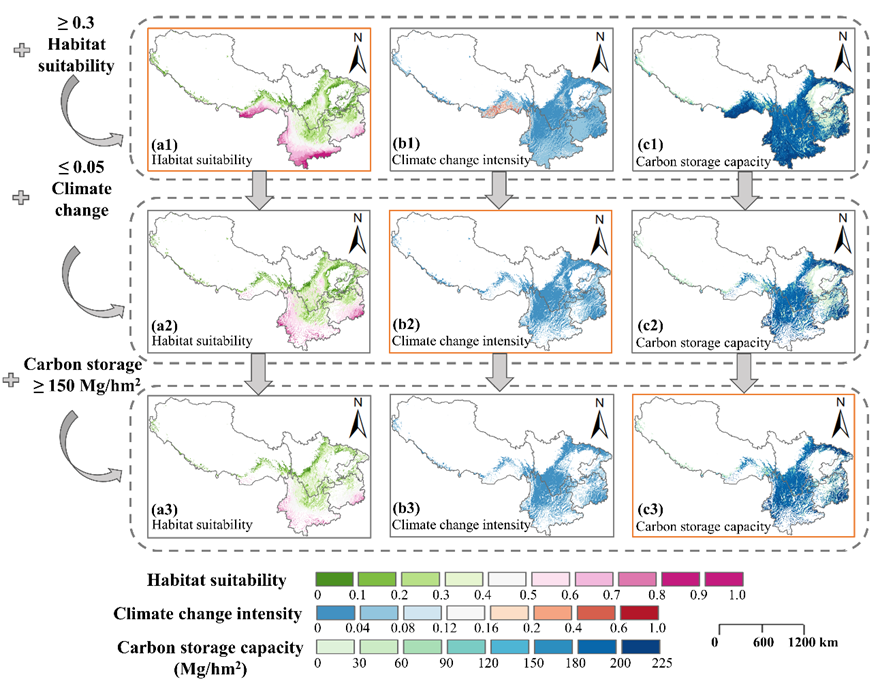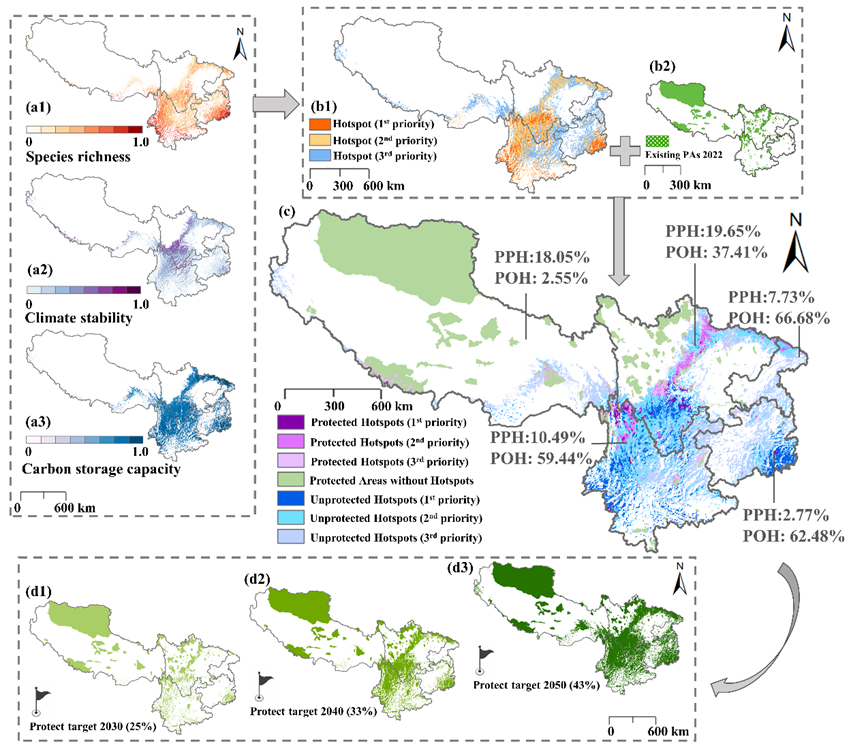Protected areas (PAs) are the frontline of biodiversity conservation, and the establishment of a protected area is also an effective approach to improve the quality of ecology and environment. The adoption of the Kunming-Montreal Global Biodiversity Framework has drawn a new blueprint for global biodiversity governance in the period from now to 2030 or even longer. Among the many factors affecting biodiversity and ecosystem functions, climate change is considered one of the most critical threats. The dynamic changes of species distribution, species combination and ecosystem caused by climate change are in sharp contrast with the static boundary of PAs. Therefore, a more forward-looking, strategic and flexible approach is required to determine the priority areas for protection the field of nature conservation.
Yu Le’s Research Group of DESS, Tsinghua University has, in collaboration of several research institutes, conducted research on the above question, exploring how to construct a PAs spatial pattern under different shared socioeconomic pathways in the future, so as to maximize the potential of PAs in providing climate refuge and nature-based solutions while conserving biodiversity.
First, the research group mapped the habitat suitability, climate change intensity, and carbon storage capacity of Southeast China (SEC) under 12 SSP-GCMs combinations to determine the conservation hotspots by 2050 (Fig. 1). Then the future SCE PAs spatial pattern construction targets and solutions were proposed by analyzing the representativeness of the current PAs network for conservation hotspots (Fig. 2). The representativeness of the SWC’s existing PAs network reveals that the PAs’ overlap with conservation hotspots is only 13.71 %, with just 12.69 % of these hotspots being adequately protected. Under the future climate scenarios, the mean temperature of the SWC may increase significantly, with the largest predicted rise being of 2.78 ◦C and the smallest being 1.36 ◦C. A considerable number of regions with intensive climate change overlap with biodiversity hotspots, and most species will be confronted with greater threats than at present. In the light of the systematic conservation theory, the Kunming-Montreal Global Biodiversity Framework and the demands for construction China’s PAs system, the research has proposed a future PAs spatial pattern construction plan and conservation targets (Fig. 2).. By 2025, 25 % of the SWC is expected to be protected; by 2040, 33% of the SWC will be included into the PA network; and by 2050, efforts will be made to realize protection of 43% of the SWC by various methods. The research has pointed out that the synergistic governance of the above issues will be facilitated by combining the biodiversity strategy, nature-based solution and national land spatial planning.
The above results have been published in Biological Conservation as a paper titled “Maximizing the Potential of Protected Areas for Biodiversity Conservation, Climate Refuge and Carbon Storage in the face of Climate Change: A case Study of Southwest China”. Wu Hui, a postdoctoral fellow of the DESS, Tsinghua University is the first author of the paper, and her co-supervisor A/Prof. Yu Le is the corresponding author. Collaborators of the paper include Researcher Ma Keping and Associate Researcher Shen Xiaoli of the Institute of Botany, Chinese Academy of Sciences, and Researcher Chen Fangyuan of the College of Urban and Environmental Sciences, Peking University. This research was funded by the National Key Research and Development Program of China (2022YFE0209400) and the Tsinghua University Initiative Scientific Research Program.

Fig. 1. Identification process of the SWC’s conservation hotspots

Fig. 2 The SWC’s conservation hotspots, distribution of current protected areas (b) and their representativeness (c), future protection plan and targets (d)
Full-text link of the paper: https://doi.org/10.1016/j.biocon.2023.110213
Written by Wu Hui
Reviewed by Yu Le and Zhang Qiang